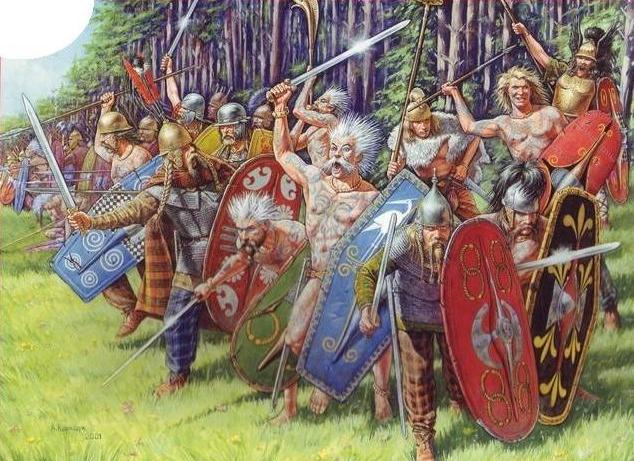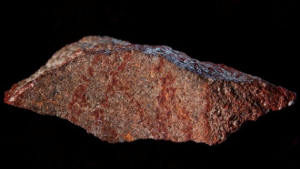|
Red Ochre Find Supports Idea of Ancient Britons as 'Painted People'
August 24, 2023
Archaeologists in the United Kingdom have found evidence to support the idea that ancient peoples there made use of body paint, supporting a longheld tradition of cultural use and naming. A team digging at a 6,500-year-old ceremonial site near Carlisle, in northwest England, have found more than 600 red ochre fragments and a number of stones that would have been used to grind ochre deposits into powder. It is the largest find of red ochre pieces yet found in the U.K. Discovered along with the red ochre were hundreds of thousands of fragments of flint, suggesting to the researchers that the site was the location for an ancient gathering, perhaps an annual one. The presence of red ochre lends credence to the idea that ancient Britons painted their bodies. Many ancient sources referred to these people as such. An early Celtic name for the people was Pretani, which suggests "painted people." A Greek explorer named Pythias is known to have visited Britain in the 4th Century B.C. and to have referred to it as Prettanike, which morphed into the Roman word Britannia. A much more well-known explorer, Julius Caesar, visited Britain twice, in 55 and 54 B.C., and specifically mentions seeing Britons wearing body paint. The name for the Picts, living in what is now Scotland, also derives from the concent of "painted people." Many peoples around the world used the red clay ochre as paint, on their bodies and on other surfaces. The earliest known evidence of such use has been found in Kenya, in the Paleolithic era. Archaeologists have found many cave drawings done using ochre, in Spain in particular but also elsewhere in Europe and in Africa, Asia, and Australia. A team in South Africa in 2018 The newly excavated U.K. site is on what was, in Stone Age times, a small island in the River Eden. Archaeologists have found wooden tridents dating to the period and now think that the island was a base for springtime salmon fishing. Also among the artifacts found are remnants of volcanic glass, which neither was nor is native to the area; the nearest source is 100 miles away. As with the red ochre, the find is the largest of its kind yet found in England. |
Social Studies for Kids |
Social Studies for Kids
copyright 2002–2024
David White





 found a red ochre sketch that they say
found a red ochre sketch that they say 
